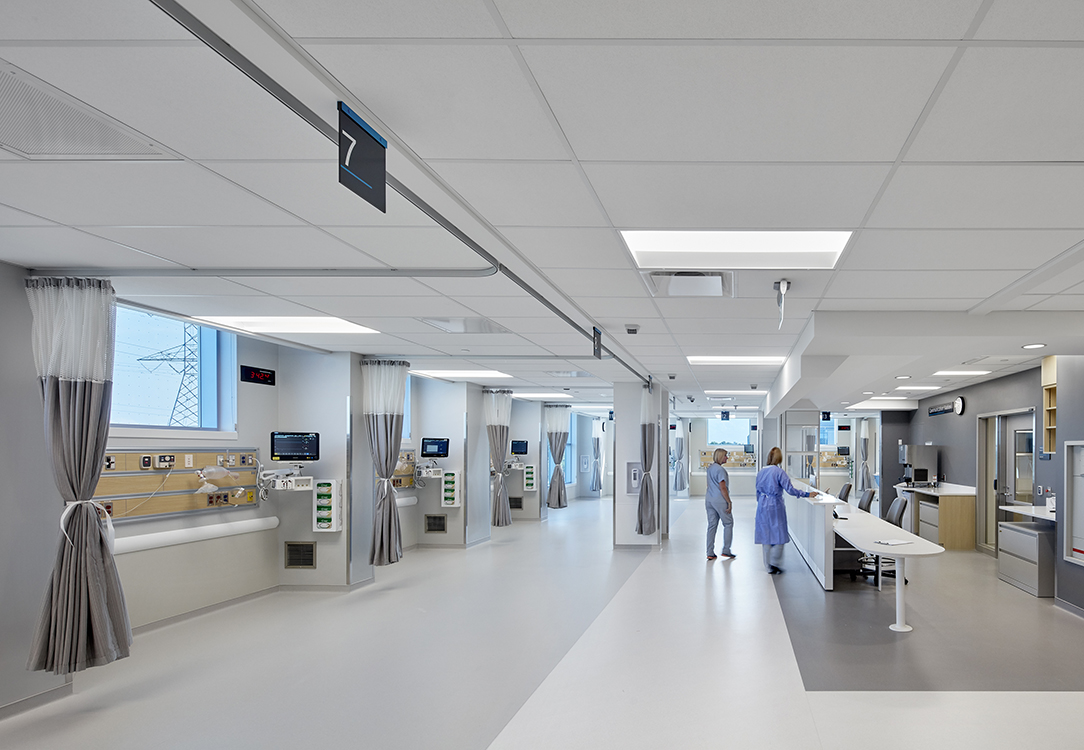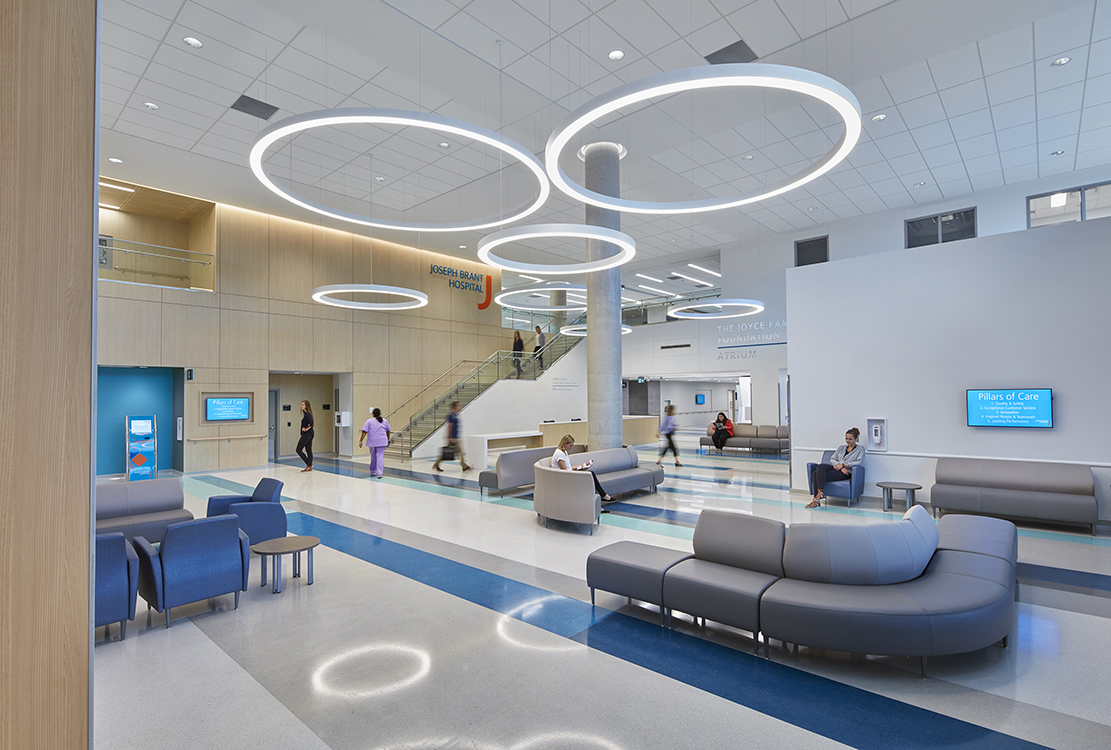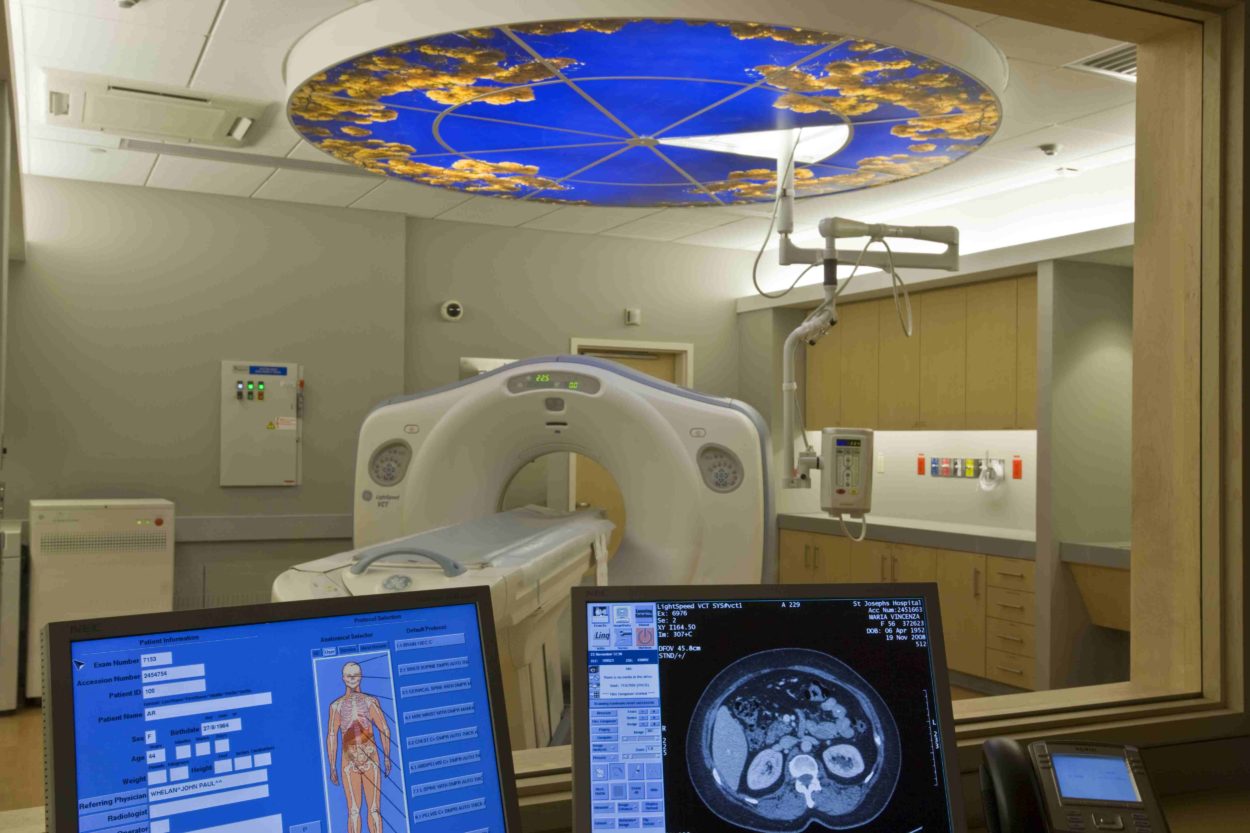
Hospital redevelopment projects provide a unique opportunity to build for the future
The increasingly critical role of technology in patient care has resulted in a dramatic increase in demands on communications and information technology infrastructure in hospitals, but aging facilities pose significant challenges to the staff who support and maintain these systems. Many hospitals in Canada were constructed well before the emergence of modern information technology, which typically means telecommunications equipment is squeezed into undersized spaces without sufficient power or cooling to ensure these important systems stay operational.
IT spaces added as an afterthought to existing construction In older buildings, telecommunications spaces have gradually expanded as the systems grow, creating a
number of challenges:
- Locations are often chosen based on what space is available, rather than what is appropriate, meaning that the size and shape of the rooms may not properly support the equipment, or the site may be adjacent to
wet piping or sources of interference. - Addition and removal of equipment over many years often results in an inefficient layout and lack of appropriate cable management or identification, making maintenance more difficult.
- Supporting services, including power and cooling, may not have the appropriate capacity or redundancy for IT loads, and equipment shutdown for maintenance and repairs can impact the availability of these services.
- Limited ceiling space in older facilities can impact the ability to add services (i.e. chilled water loop) or new communications cables.
Limitations have a significant budget impact
All of these challenges can have a significant impact on operational and capital costs, and can add up to multiples of what is typical of a new installation with properly designed spaces and systems.
The greatest impact is seen in operational costs, where limitations make the systems more difficult to maintain, support and upgrade. From a user perspective, network performance can be affected by things such as heat or interference, which can create unnecessary delays in accessing information or even unplanned network downtime – a condition which critically impacts patient care across the entire facility. However, capital costs are not immune to these conditions either; overheating, dust and vibration can reduce the lifespan of equipment, meaning it must be replaced sooner.
Redevelopment with the future in mind
Hospital redevelopment provides the opportunity to build new IT systems that can withstand the test of time, and to address issues with existing systems in order to support expansion. While no one can predict the needs of technology decades from now, the following principles will help avoid creating similar challenges in the future:
- Engage users early on in the planning process, and design IT systems to align with the technology vision for the hospital. This approach facilitates adoption later on and helps ensure IT systems can support the
unique needs of the facility. - Consider the facility as a whole when implementing new IT systems and infrastructure; design decisions for new spaces can have a significant impact on existing IT infrastructure, and a gap analysis can help prevent unpleasant surprises later on.
- Provide additional capacity and flexibility in infrastructure, spaces and supporting systems so they can be adapted as technology progresses.
- Aim for consistency in services throughout the facility. Differences in system performance or user experience can impact adoption, staff satisfaction and, in the case of clinical life safety systems, even patient safety.
It is also worth investigating which challenges can be addressed in place and which would benefit from a “greenfield” solution. For example, building a new data centre in a newly constructed area of the building is often less complex and cheaper than mitigating issues with the existing location. Many redevelopment projects use this opportunity to create a space that is properly sized and designed to support critical IT systems for the entire facility. The practicality of options should be evaluated as part of the planning process.
Ultimately, redevelopment projects are a chance for hospitals to create efficient and cost-effective IT systems capable of supporting the critical nature of technology in healthcare, and support the highest standard of patient care.
Author:

Kim Osborne Rodriguez,P.Eng., RCDD
kim.osbornerodriguez@hhangus.com
Published June 2016 in the Canadian Healthcare Engineering Society website


